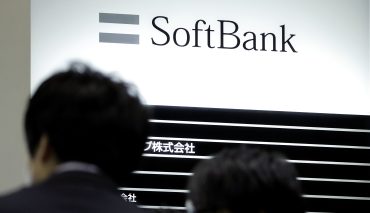
- Consumer Data
- Financial Regulation
- Open Banking
JPMorgan Data Fees Redefine Open Banking Economics
6 minute read

JPMorgan’s new fintech data fees reshape open banking landscape as financial apps face rising operational costs
Key Takeaways
- JPMorgan introduces usage-based fees for data access: The largest U.S. bank now charges financial technology companies like Plaid for accessing customer account data, marking the end of the free data era in open banking.
- Excessive API calls drive cost concerns: Only 13% of 1.89 billion monthly data requests to JPMorgan systems are customer-initiated transactions, with the bank citing $50 million in fraud losses from aggregator-processed payments.
- Industry-wide shift threatens fintech economics: If other major banks adopt similar pricing models, data aggregators and startups could face millions in new annual costs, potentially stifling innovation and consolidating market power among well-capitalized players.
Introduction
JPMorgan Chase transforms its approach to financial data sharing by implementing fees for technology companies accessing customer account information. The nation’s largest bank now charges data aggregators like Plaid Inc. for services that were previously free, fundamentally altering the economics of open banking in the United States.
This shift affects millions of consumers who use fintech applications connected to their JPMorgan accounts. The bank processes approximately 2 billion account access requests monthly, many from third-party aggregators that enable popular financial apps and services.
Key Developments
JPMorgan has distributed pricing sheets to major data aggregators including Plaid, MX, and Yodlee, establishing a usage-based fee structure for accessing consumer-permissioned account data. The bank cites significant infrastructure investments and security concerns as primary drivers for the policy change.
Internal bank data reveals that only 13% of the 1.89 billion API calls made to JPMorgan’s systems in June were initiated by customers for actual transactions. The remaining requests serve purposes such as product improvement, fraud detection, and data collection for aggregator services.
Plaid disputes JPMorgan’s characterization of excessive data usage, arguing that the figures “misrepresent how data access works.” The company maintains that data pulls occur as part of standard authorized services once customers grant access permissions.
Market Impact
The financial implications extend across the fintech ecosystem, with Plaid’s $6 billion valuation potentially under pressure from new operational costs. Data aggregators that built business models around free bank data access now face restructured economics that could reach millions in annual expenses.
JPMorgan’s annual technology budget of $18 billion underscores the scale of infrastructure supporting these data flows. The bank recorded $50 million in fraud losses from ACH payments initiated by aggregators and projects this figure could triple within five years.
Usage-based pricing creates new revenue opportunities for JPMorgan while potentially forcing fintech companies to raise prices, introduce premium service tiers, or absorb costs that could squeeze profit margins.
Strategic Insights
The move signals JPMorgan’s transition from passive data provider to active monetizer of customer information access. This strategy could establish precedent for other major banks seeking to offset infrastructure costs and reduce system strain from excessive API requests.
Transactions processed through aggregators demonstrate 69% higher fraud claim rates compared to direct bank transactions, creating both security and financial incentives for banks to control data access. The policy change positions JPMorgan to capture value from its customer data while potentially limiting competitor access.
If adopted industry-wide, the fee structure could favor large, well-capitalized fintech companies over startups that rely on free data access for initial growth and development.
Expert Opinions and Data
“We’ve invested significant resources creating a valuable and secure system that protects customer data,” said JPMorgan spokeswoman Emma Eatman. “We’ve had productive conversations and are working with the entire ecosystem to ensure we’re all making the necessary investments in the infrastructure that keeps our customers safe.”
Todd H. Baker, senior fellow at business and law schools, highlights that this development might impact up to 25% of U.S. individuals using JPMorgan-related fintech services. According to Bloomberg, the agreement includes enhanced customer controls allowing Chase users to monitor which applications access their data and revoke permissions when desired.
Penny Crosman, Executive Editor of Technology at American Banker, notes that fee discussions connect to broader conversations about the economic value of consumer financial data. Industry critics argue these moves could restrict competition and limit consumer financial choices while potentially stifling fintech innovation.
Conclusion
JPMorgan’s fee implementation represents a watershed moment for U.S. open banking, ending the era of free customer data access for financial technology companies. The policy change forces aggregators and fintech firms to incorporate data access costs into their business models, potentially slowing innovation while favoring larger market participants.
The development occurs amid legal challenges to Biden-era open banking rules that would mandate free data sharing. JPMorgan’s proactive approach positions the bank to maintain control over data monetization regardless of regulatory outcomes, while the broader industry watches for similar moves from other major financial institutions.








